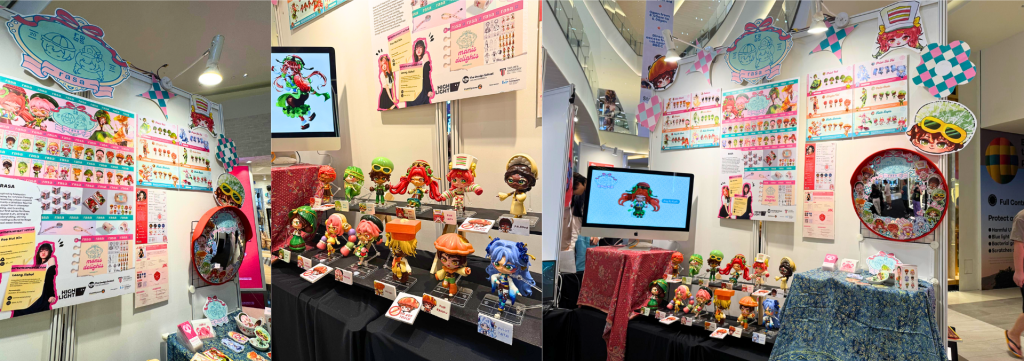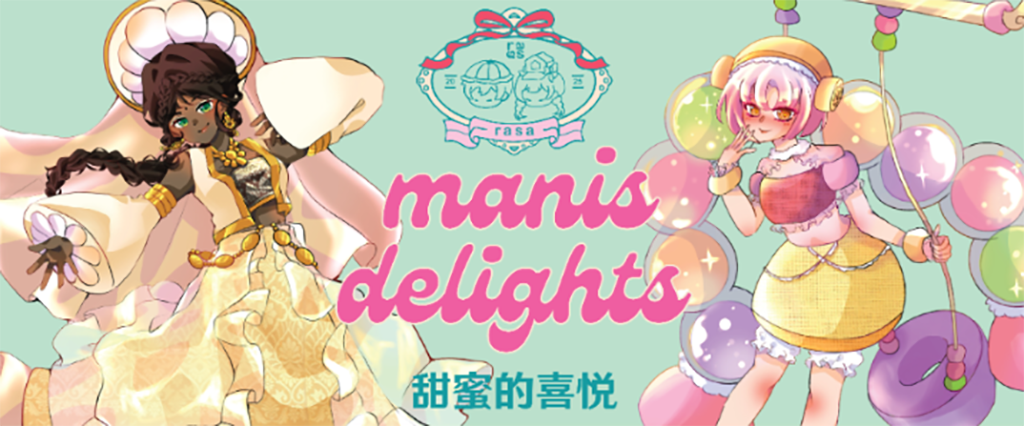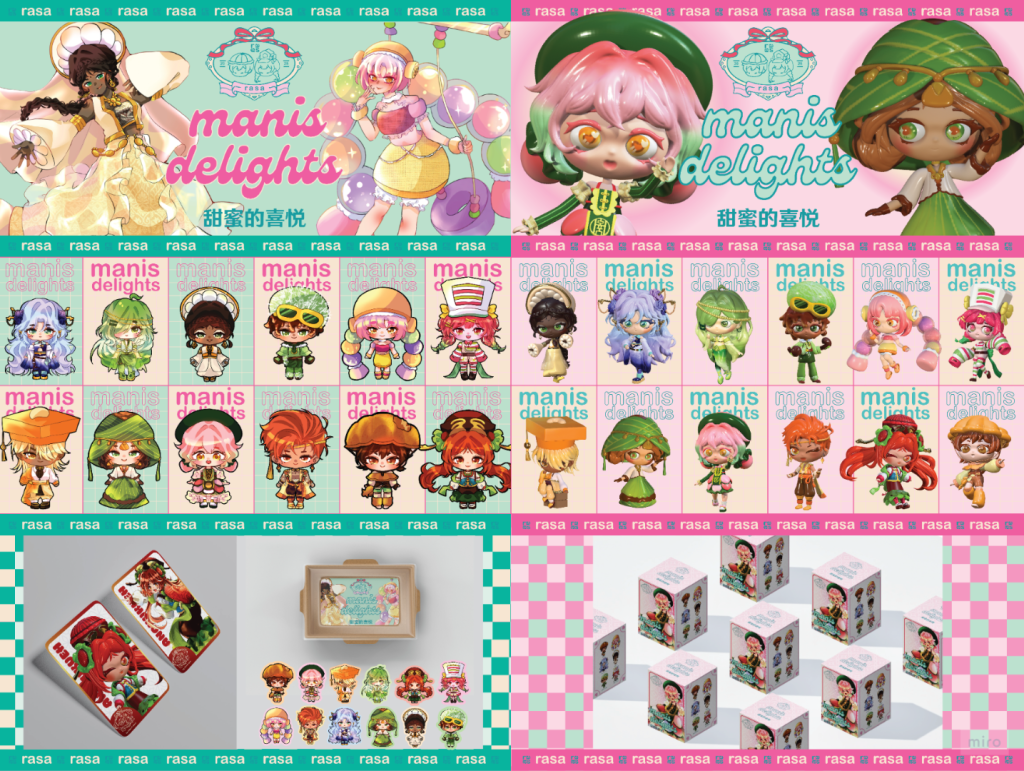
Rasa is a blind box figurine series designed as a sweet tribute to Malaysia’s rich culture. In our project, RASA: Manis Delights, traditional kuih muih are reimagined as playful characters known as Rasa, guardians of Malaysian heritage. Each of them has a special blessing and personality rooted in the diverse origins of our local delicacies. Whether sparking nostalgia and comfort through familiarity to the locals or offering a deeper cultural connection to travellers to bring home with, Manis Delights symbolises the small joys and sweet moments that brings us all together.
Through character design and storytelling, each Rasa carries a piece of history, culture, and emotion. Our project blends entertainment design, product development, and branding to turn cultural appreciation into an interactive, tangible experience.
Research
Rasa was born from our excitement to create a blindbox series with a local twist. While we initially explored themes like iconic buildings and food, we ultimately rolled with Ms. Anis’s suggestion of using local kuih-muih. Their vibrant colours and cultural relevance made them a perfect fit for our art style and concept. With limited time, we leveraged our strengths: Jiahui focused on character design while Raemi handled character modelling, allowing us to bring the project to life efficiently.
Character Design & Modelling
We aimed to represent kuih from different cultures, selecting them based on their popularity and distinctiveness. By studying each kuih’s silhouette, features and colour scheme, we crafted characters with unique personalities inspired by their cultural backgrounds. These traits were thoughtfully integrated into the final character designs, giving each one a meaningful identity.
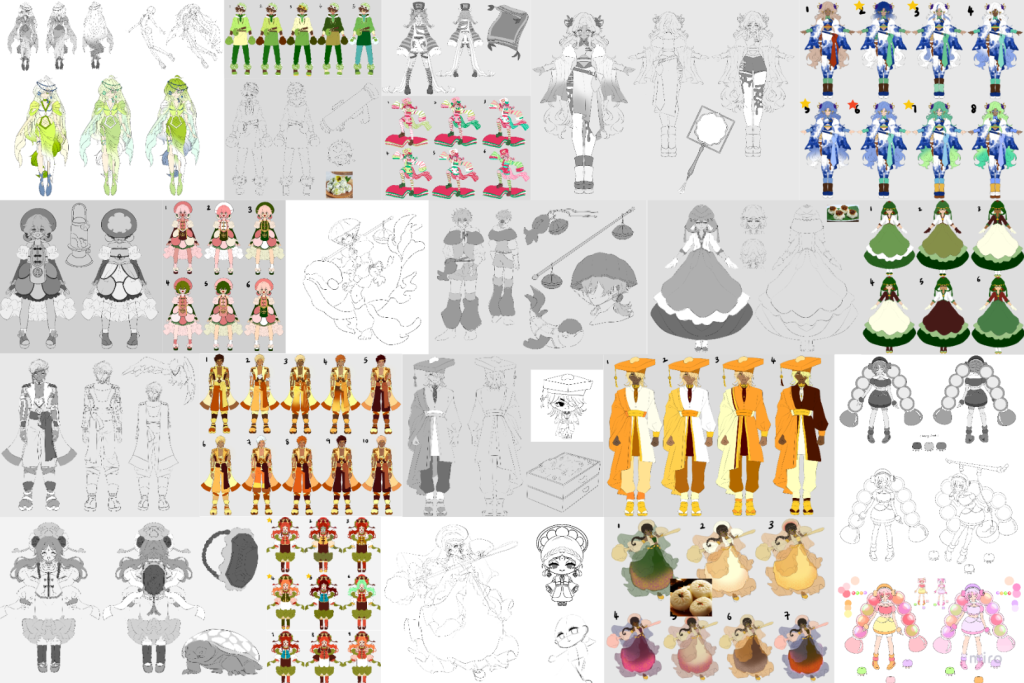
For the character modelling process, we translated our approved 2D character design concept art into 3D figures using a software called Nomad Sculpt. While the original designs were expressive and detailed, adapting them into 3D required a balance between stylisation and recognisability. Our goal was to have all characters share a standardised chibi-style body shape, making them cohesive as a collectable series. To not complicate things due to the unfamiliarity with 3D printing, the poses are different from the splash art. We decided on the simple poses, making sure it still communicates the individuality of the character to the viewer.
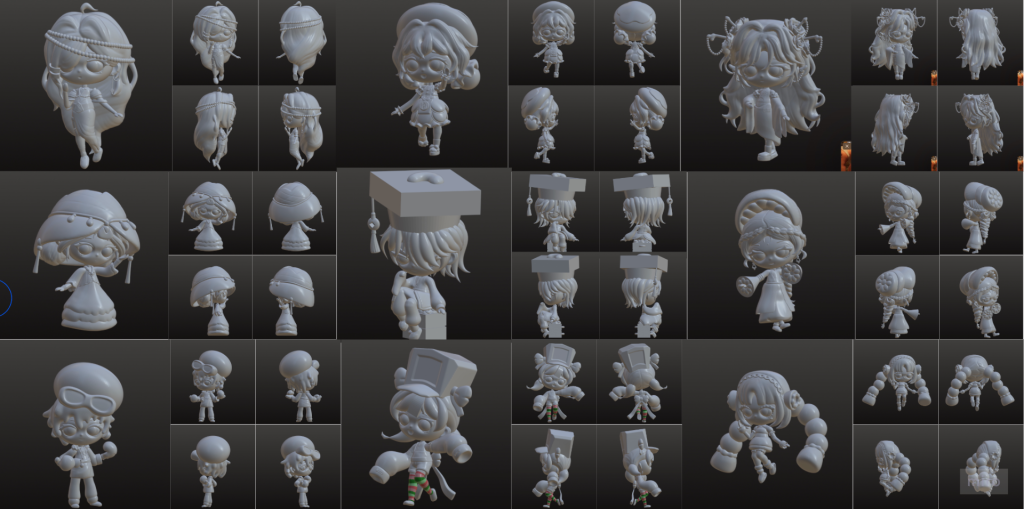
3D printing & painting
The 3D printing and painting process was one of the more challenging part of the project, as it was entirely new to us. We printed all 12 models piece by piece, then carefully sanded, painted, and reassembled each one. With time running short, we enlisted help from friends and family(special thanks to my dad!) to speed up the sanding process. Mr. Ahmad, the staff in charge of 3D printing, was incredibly kind and supportive throughout the stressful journey. Despite the hurdles, we were proud and satisfied with the final results.
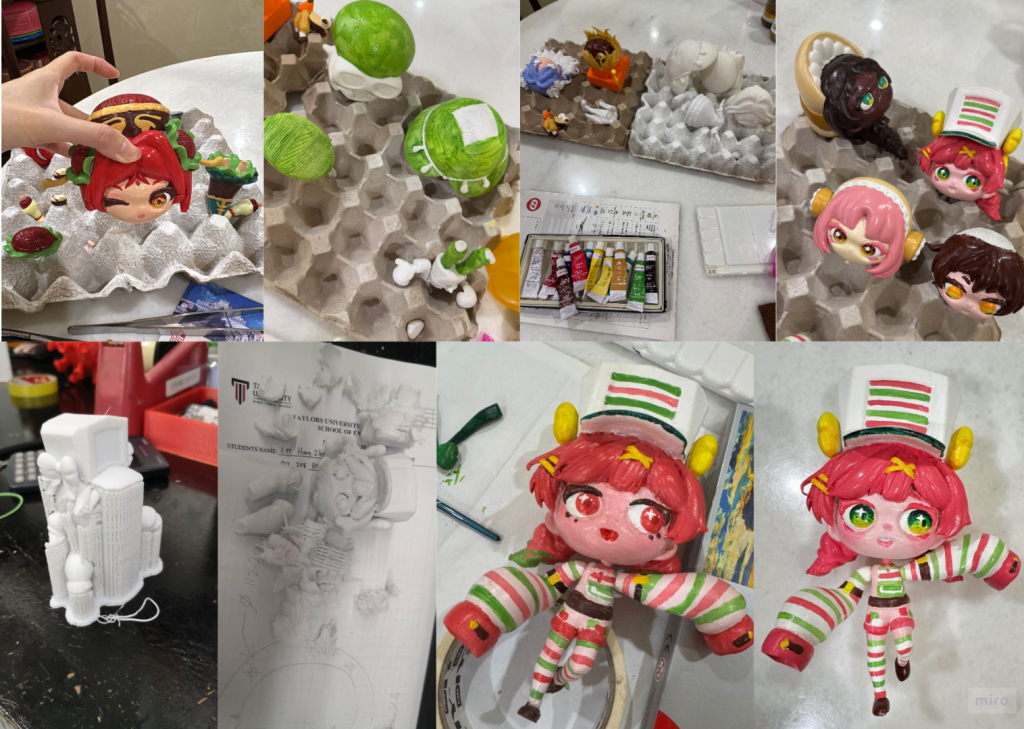
Final thoughts
Jiahui: This project goes against all the things an FYP should be (trying something completely new to us/ unconventional for the industry/ large focus on the final product), and yet against all odds, manages to emerge victorious. The positive feedback we received during the final presentation, followed by the enormous positive attention at the showcase, gave me a lot of confidence and dopamine, making the months-long battle worthwhile.
Rasa will forever be a project I’m proud of, it was my blood, sweat and tears, our children, all 12 of them. Thank you to my partner and everyone who supported us along the way, making Rasa a reality.
Hui Xin (Raemi): Rasa was a project that pushed me beyond my comfort zone and was a project that allowed me to explore more of my skills that I did not have much confidence in. For a final year project that we only had a semester to complete, the dream and ambition was big, but it was there. Despite the challenges, the ambition behind the project never faded, and I’m proud of this project. I’m glad to be a part of this project and work with my partner to make this come true. While there are a few shortcomings and things I wish I had done differently, I’m grateful for the growth, lessons, and creative joy this project has given me.
